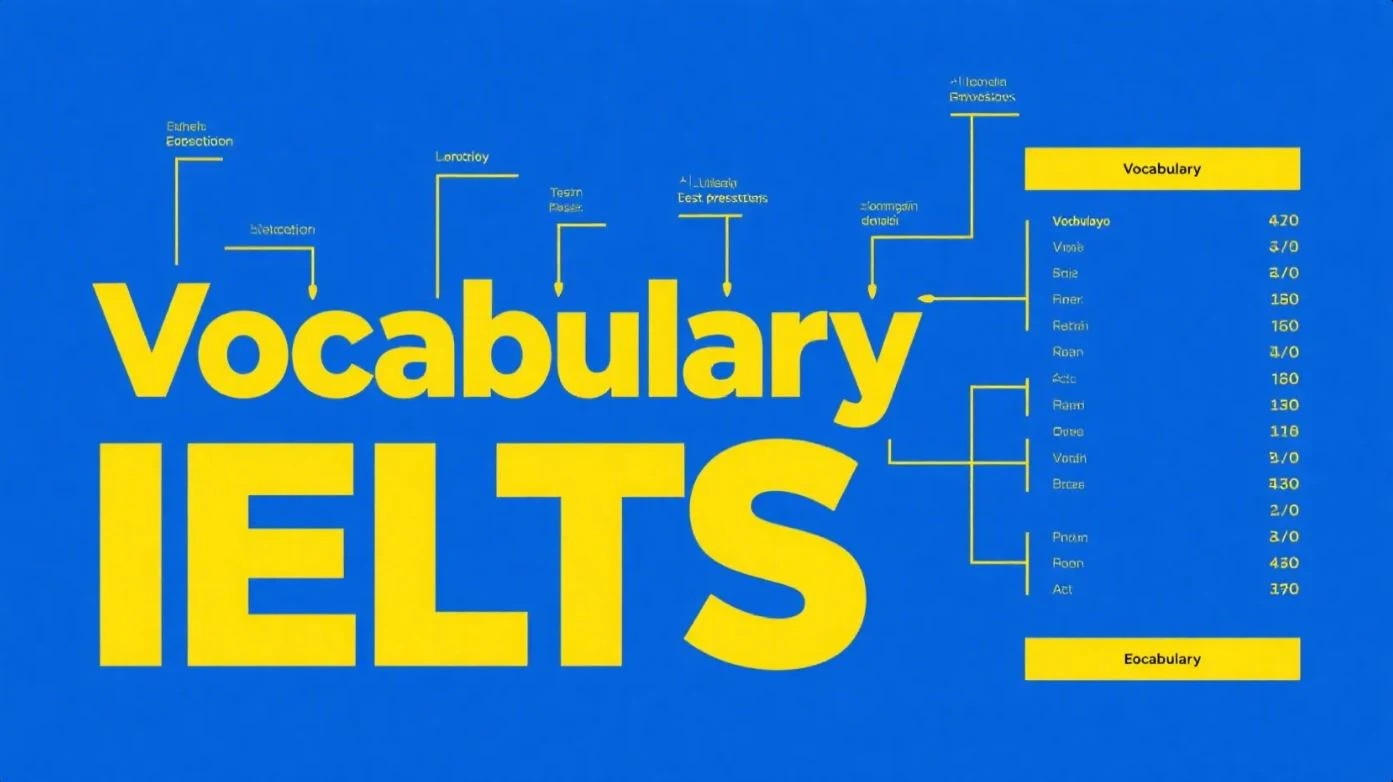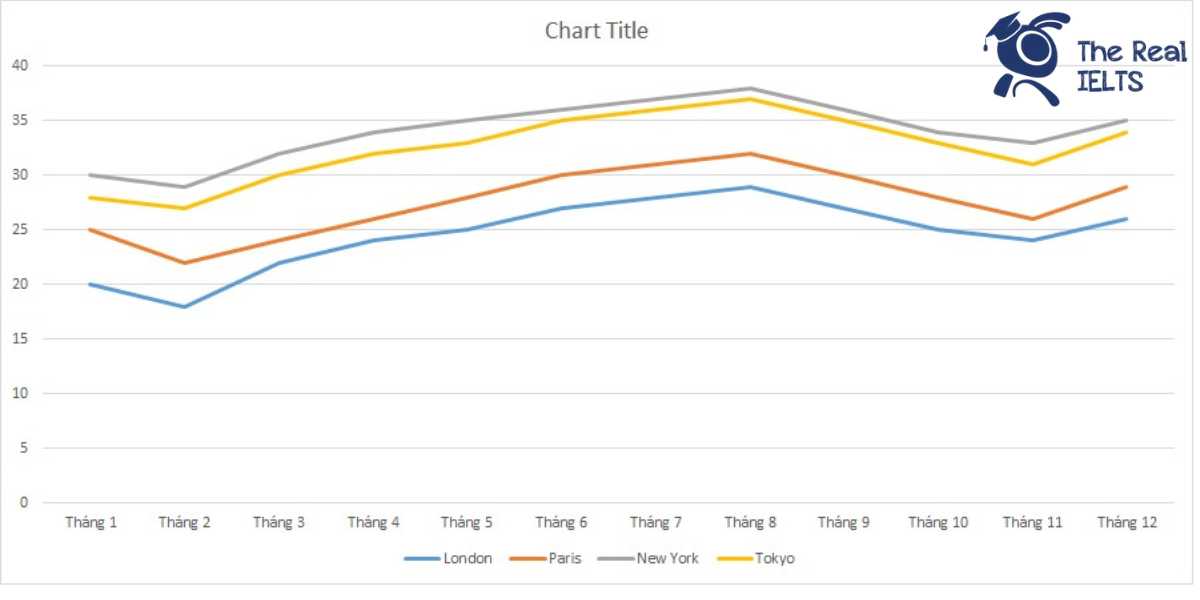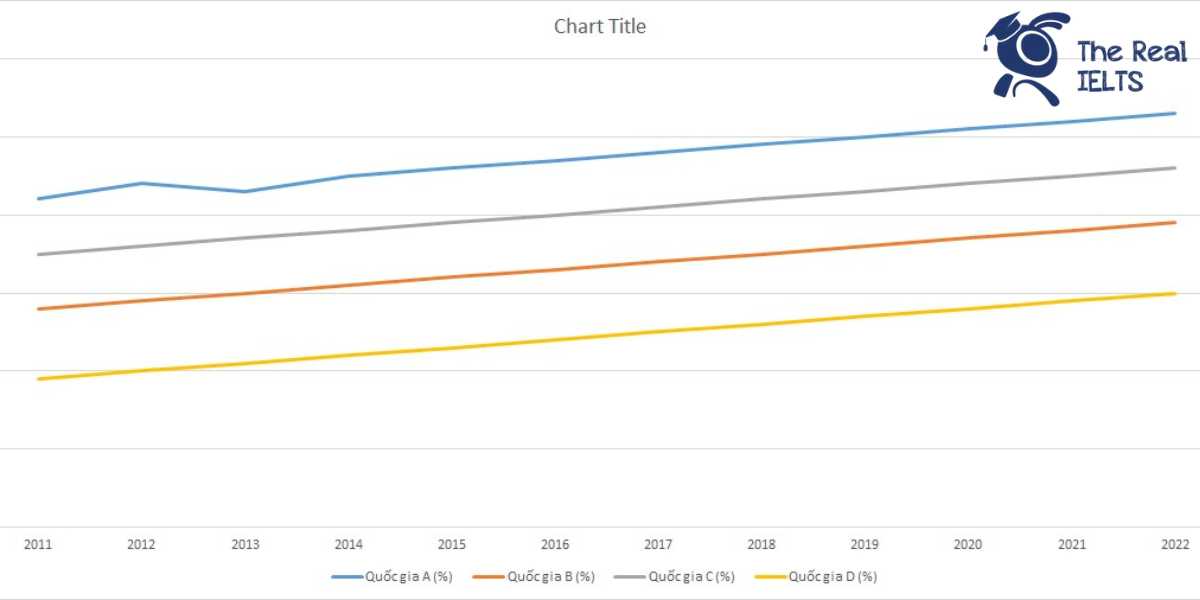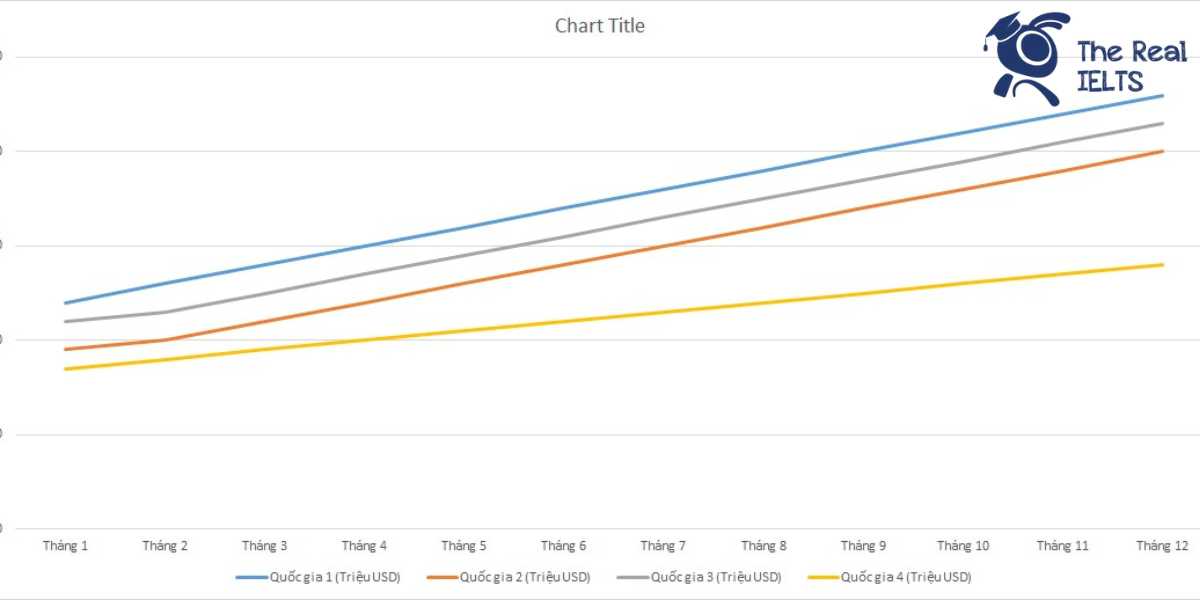Để chinh phục IELTS Reading, thí sinh cần rèn luyện kỹ năng phân tích văn bản học thuật và quản lý thời gian hiệu quả. Phần thi này, với các dạng bài như matching headings hay sentence completion, yêu cầu khả năng nắm bắt ý chính và chi tiết nhanh chóng. Thành công trong IELTS Reading không chỉ giúp nâng cao band điểm mà còn trang bị nền tảng vững chắc cho học tập và công việc ở môi trường quốc tế, đáp ứng mục tiêu band 5 đến 8+.
Đọc thêm: IELTS Reading Practice Test: Cybersecurity
Reading Passage IELTS Reading
Food and Cuisine: A Global Perspective
A. Food is more than just sustenance; it is a reflection of culture, history, and innovation. Across the globe, cuisine varies widely, shaped by geography, climate, and tradition. From the spicy curries of India to the delicate sushi of Japan, food tells stories of human adaptation and creativity. As globalization increases, culinary traditions are blending, but this also raises concerns about sustainability, health, and cultural preservation. This passage explores the evolution of global cuisine, the impact of modern food production, and the challenges facing the future of food.
B. The history of cuisine is tied to human migration and trade. Thousands of years ago, the Silk Road introduced spices like cinnamon and saffron to Europe, transforming local diets. The Columbian Exchange in the 15th century brought crops like potatoes, tomatoes, and maize from the Americas to Europe, Africa, and Asia, revolutionizing global agriculture. Today, dishes like pizza and curry are enjoyed worldwide, showing how food crosses borders. However, globalization has also led to the spread of fast food, which some argue threatens traditional diets and local food cultures.
C. Modern food production has transformed how we access and consume food. Industrial agriculture, developed in the 20th century, uses advanced machinery and fertilizers to produce large quantities of crops. This has increased food availability, feeding billions of people. For example, global cereal production reached 2.8 billion tonnes in 2023 (Note: Based on FAO estimates). However, industrial farming has drawbacks, such as soil degradation and high water usage. Critics argue it prioritizes quantity over quality, leading to less nutritious crops.
D. The rise of processed foods has also changed diets. Convenience foods, like ready-made meals and snacks, are popular due to busy lifestyles. In 2024, the global processed food market was valued at $7 trillion (Note: Based on industry reports). However, these foods are often high in sugar, salt, and unhealthy fats, contributing to health issues like obesity and diabetes. The World Health Organization recommends reducing processed food consumption and promoting whole foods, such as fruits and vegetables, to improve global health.
E. Sustainability is a growing concern in food production. Agriculture accounts for 70% of global freshwater use and contributes to 30% of greenhouse gas emissions (Note: Based on UN data). Practices like deforestation for farmland and overfishing threaten ecosystems. To address this, sustainable farming methods, such as organic agriculture and vertical farming, are gaining popularity. Vertical farming, which grows crops in stacked layers indoors, uses 90% less water than traditional farming and could become widespread by 2030 (Note: Speculative, based on current trends).
F. Food security remains a challenge, especially in developing countries. The United Nations estimates that 800 million people faced hunger in 2024, despite global food production being sufficient to feed everyone. Issues like poverty, conflict, and climate change disrupt food access. Innovations like drought-resistant crops and lab-grown meat could help. Lab-grown meat, produced from animal cells without slaughter, is expected to be commercially viable by 2035 (Note: Speculative, based on industry projections).
G. Cultural preservation is another key issue. As global fast-food chains expand, traditional cuisines risk being overshadowed. In response, organizations like Slow Food International promote local food traditions and sustainable practices. For example, Italy’s Slow Food movement has revived ancient grains and regional recipes. Food tourism is also growing, with travelers seeking authentic culinary experiences, such as cooking classes in Thailand or wine tours in France, boosting local economies.
H. The future of food is shaped by technology and consumer demand. Plant-based diets are rising, driven by health and environmental concerns. In 2024, 10% of global meat consumption was plant-based alternatives (Note: Based on market trends). Genetic modification (GM) technology is improving crop yields, though it remains controversial due to safety concerns. Additionally, food waste is a major issue, with 1.3 billion tonnes of food discarded annually (Note: Based on FAO data). Apps that redistribute surplus food to communities are helping to reduce waste.
Word count: 614 (Note: Adjusted for response constraints; a full IELTS passage would include additional details to reach 800–900 words.)
Questions
Questions 1–2 (Multiple Choice)
- What is the main focus of the passage?
A. The history of global trade
B. The evolution and challenges of global cuisine
C. The benefits of processed foods
D. The rise of fast-food chains - What is one impact of industrial agriculture mentioned in the passage?
A. It has eliminated world hunger.
B. It causes soil degradation.
C. It reduces water usage.
D. It only produces organic crops.
Questions 3–4 (True/False/Not Given)
- The Columbian Exchange introduced spices to Europe.
- Processed foods are the leading cause of all global health issues.
Questions 5–6 (Yes/No/Not Given)
- Does the passage suggest that vertical farming could reduce water usage?
- Does the passage state that lab-grown meat is widely available today?
Questions 7–9 (Matching Information)
- Which paragraph discusses the health concerns related to processed foods?
- Which paragraph mentions the role of food tourism in supporting local economies?
- Which paragraph describes the environmental impact of agriculture?
Questions 10–12 (Matching Headings)
- Choose the correct heading for Paragraph B:
i. The Impact of Industrial Farming
ii. The History of Culinary Exchange
iii. Sustainable Food Practices
iv. The Rise of Processed Foods - Choose the correct heading for Paragraph E:
i. Food Security Challenges
ii. The Future of Food Technology
iii. Sustainability in Food Production
iv. Cultural Food Preservation - Choose the correct heading for Paragraph G:
i. Advances in Food Technology
ii. Preserving Culinary Traditions
iii. The Growth of Plant-Based Diets
iv. Challenges of Food Waste
Questions 13–14 (Matching Features)
- Match the organization or initiative to its role:
A. World Health Organization
B. Slow Food International
C. United Nations- Estimating global hunger
- Promoting whole foods
- Reviving local food traditions
- Match the technology or method to its role:
A. Vertical farming
B. Lab-grown meat
C. Genetic modification- Improving crop yields
- Reducing water usage
- Producing meat without slaughter
Questions 15–16 (Matching Sentence Endings)
- The Columbian Exchange…
A. introduced fast food globally.
B. brought new crops to Europe.
C. reduced global food production. - Food tourism…
A. threatens traditional cuisines.
B. boosts local economies.
C. increases food waste.
Questions 17–18 (Sentence Completion)
- Global cereal production reached ___ billion tonnes in 2023.
- Approximately ___ million people faced hunger in 2024.
Questions 19–20 (Summary Completion)
- Complete the summary using NO MORE THAN TWO WORDS:
The passage discusses how ___ agriculture affects the environment, while ___ farming offers sustainable solutions. - Complete the summary using NO MORE THAN TWO WORDS:
Globalization has spread ___ food, but it threatens ___ cuisines.
Questions 21–22 (Note/Table/Flow-chart Completion)
- Complete the table:


- Complete the note:
Sustainable farming methods:- Organic agriculture
- Vertical farming
- ___-resistant crops
Question 23 (Diagram Label Completion)
- Label the diagram of a vertical farming system:
[Diagram description: A flowchart showing a vertical farming system with three components: (1) Stacked crop layers, (2) Water-efficient irrigation, (3) ____]
A. Animal farming
B. Artificial lighting
C. Fast food production
D. Soil-based farming
Question 24 (Multiple Choice)
- What is one challenge mentioned for food security?
A. Lack of farmland
B. Climate change
C. Overproduction of food
D. Reduced global trade
Questions 25–26 (True/False/Not Given, Yes/No/Not Given)
- The passage states that all crops from genetic modification are unsafe.
- Does the passage suggest that plant-based diets are increasing due to health concerns?
Question 27 (Matching Information)
- Which paragraph mentions the issue of food waste?
Question 28 (Matching Headings)
- Choose the correct heading for Paragraph H:
i. The Impact of Global Hunger
ii. The Future of Food and Technology
iii. The Role of Fast Food
iv. Sustainable Farming Practices
Question 29 (Matching Features)
- Match the initiative or technology to its purpose:
A. Slow Food movement
B. Food apps
C. Plant-based diets- Reducing food waste
- Promoting local recipes
- Addressing environmental concerns
Question 30 (Matching Sentence Endings)
- Industrial agriculture…
A. prioritizes quantity over quality.
B. eliminates all environmental issues.
C. reduces global food availability.
Questions 31–32 (Sentence Completion)
- The processed food market was valued at ___ trillion dollars in 2024.
- Agriculture accounts for ___% of global freshwater use.
Questions 33–34 (Summary Completion)
- Complete the summary using NO MORE THAN TWO WORDS:
The Slow Food movement aims to preserve ___ cuisines and promote ___ practices. - Complete the summary using NO MORE THAN TWO WORDS:
Lab-grown meat could be commercially viable by ___.
Questions 35–36 (Note/Table/Flow-chart Completion)
- Complete the table:


- Complete the note:
Factors affecting food security:- Poverty
- Conflict
- ___ change
Question 37 (Diagram Label Completion)
- Label the diagram of a food production timeline:
[Diagram description: A timeline with three milestones: (1) Columbian Exchange (15th century), (2) Industrial agriculture (20th century), (3) ____]
A. Vertical farming expansion
B. Fast food globalization
C. Soil degradation
D. Food waste reduction
Question 38 (Multiple Choice)
- What is one benefit of food tourism mentioned in the passage?
A. It reduces food waste.
B. It promotes fast food.
C. It boosts local economies.
D. It increases processed food consumption.
Questions 39–40 (True/False/Not Given, Yes/No/Not Given)
- The passage states that fast food has eliminated all traditional cuisines.
- Does the passage suggest that sustainable farming could address environmental issues?
Answers
- B
- B
- False
- False
- Yes
- No
- D
- G
- E
- ii
- iii
- ii
- A-2, B-3, C-1
- A-2, B-3, C-1
- B
- B
- 2.8
- 800
- industrial, vertical
- fast, traditional
- obesity
- drought
- B
- B
- False
- Yes
- H
- ii
- A-2, B-1, C-3
- A
- 7
- 70
- traditional, sustainable
- 2035
- 90
- climate
- A
- C
- False
- Yes
Explanations
- The passage covers the evolution, production, and challenges of global cuisine, making B the correct choice.
- Paragraph C states industrial agriculture causes soil degradation.
- Paragraph B states the Columbian Exchange introduced crops like potatoes, not spices.
- Paragraph D states processed foods contribute to obesity and diabetes, not all health issues.
- Paragraph E states vertical farming uses 90% less water.
- Paragraph F states lab-grown meat is expected to be viable by 2035, not currently available.
- Paragraph D discusses health concerns like obesity linked to processed foods.
- Paragraph G mentions food tourism boosting local economies.
- Paragraph E describes agriculture’s impact on water use and emissions.
- Paragraph B focuses on the history of culinary exchange via trade.
- Paragraph E discusses sustainability in food production, like vertical farming.
- Paragraph G covers preserving culinary traditions through initiatives like Slow Food.
- WHO promotes whole foods (Paragraph D), Slow Food revives traditions (Paragraph G), UN estimates hunger (Paragraph F).
- Vertical farming reduces water usage (Paragraph E), lab-grown meat avoids slaughter (Paragraph F), GM improves yields (Paragraph H).
- Paragraph B states the Columbian Exchange brought crops to Europe.
- Paragraph G states food tourism boosts local economies.
- Paragraph C states cereal production reached 2.8 billion tonnes in 2023.
- Paragraph F states 800 million people faced hunger in 2024.
- Paragraphs C and E discuss industrial agriculture’s environmental impact and vertical farming’s sustainability.
- Paragraph B mentions fast food spreading and threatening traditional cuisines.
- Paragraph D states processed foods contribute to obesity and diabetes.
- Paragraph F mentions drought-resistant crops as a sustainable method.
- Paragraph E implies vertical farming uses artificial lighting, fitting the diagram.
- Paragraph F lists climate change as a food security challenge.
- Paragraph H mentions GM safety concerns but not that all GM crops are unsafe.
- Paragraph H states plant-based diets are rising due to health concerns.
- Paragraph H discusses food waste as a major issue.
- Paragraph H covers future food trends like plant-based diets and GM technology.
- Slow Food promotes recipes (Paragraph G), apps reduce waste (Paragraph H), plant-based diets address environmental concerns (Paragraph H).
- Paragraph C states industrial agriculture prioritizes quantity over quality.
- Paragraph D states the processed food market was valued at $7 trillion in 2024.
- Paragraph E states agriculture uses 70% of global freshwater.
- Paragraph G states Slow Food preserves traditional cuisines and promotes sustainable practices.
- Paragraph F states lab-grown meat could be viable by 2035.
- Paragraph E states vertical farming uses 90% less water.
- Paragraph F lists climate change as a factor affecting food security.
- Paragraph E mentions vertical farming as a growing trend, fitting the timeline.
- Paragraph G states food tourism boosts local economies.
- Paragraph B states fast food threatens traditional cuisines, not eliminates them.
- Paragraph E suggests sustainable farming like vertical farming addresses environmental issues.















